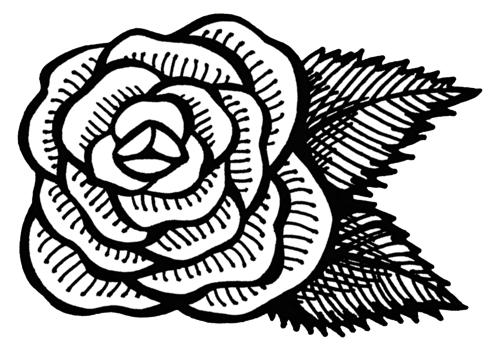Hey loves! I have such a treat for you today: an interview with Krystal banner, author/illustrator of the Kaliedadope Tarot Deck. This beautiful deck is bold, current, packed with rich symbolism, and it is Kickstarting right now!
And another treat—we had such a phenomenal conversation, and it transcribed to so many words on paper, that I couldn’t fit it all in a written post. So we decided to share Interrobang Tarot’s first ever audio post with you! You can listen to our full conversation, and I highly recommend that you do. It’s such a joy hearing an artist share her work in her own voice.
Play the audio interview here.
I’ve written up some selections from our conversation below. Scroll through to view pictures of Krystal’s works and find links to everything we’ve referenced. This transcript has been edited for clarity and brevity, but I’ve ket as much content and voice intact as I could.
And another treat—we had such a phenomenal conversation, and it transcribed to so many words on paper, that I couldn’t fit it all in a written post. So we decided to share Interrobang Tarot’s first ever audio post with you! You can listen to our full conversation, and I highly recommend that you do. It’s such a joy hearing an artist share her work in her own voice.
Play the audio interview here.
I’ve written up some selections from our conversation below. Scroll through to view pictures of Krystal’s works and find links to everything we’ve referenced. This transcript has been edited for clarity and brevity, but I’ve ket as much content and voice intact as I could.
I always joke like tarot found me, but I discovered it and it came into my life full force. I started learning, I started buying cards, and it spoke to me. It spoke to what I was going through. It gave me another perspective in dealing with it, and I started to experience this rapid spiritual growth.
Alright, first things first—can you tell us a little bit about yourself and how you got started both with art and tarot? What’s your story with those two mediums?
Sure, so I’ve always been an artist. As a child, it’s always been my escape. When I’m happy, I draw and when I’m sad I draw.
Starting out, I didn’t really have a preferred medium. Throughout high school I was always in art, and then I got to college and I majored in engineering, so no time for art. I had to decide and focus on engineering. So I started my engineering career, and one day I was like, “you know what—I want to paint something,” so I started getting back into art with acrylic on canvas.
I started doing that, and then my career took me to Europe. I was traveling all the time, and I cannot carry canvas, I cannot carry paint. So I put it to the side again, and then I discovered digital art. That’s really where everything started coming together because I can take that anywhere. If I get a creative idea, I can express it. If I’m on a plane, I can draw. If I’m in France, I can draw. So that really gave me the tool to be able to be creative all the time regardless of what was going on with my career. I feel like that’s what led me back into art.
Last year, I actually started a company called Kaleidadope. I was drawing greeting cards for friends. One of my friends was like, “you definitely need to sell these!” So early last year I started putting them on Etsy and they started selling a lot, and I’m like, “maybe this is a thing!” So I continued to draw art prints, and cards and things like that.
Last year was really rough for me just from a personal standpoint. I was just dealing with a whole lot, and I don’t know what happened. I always joke like tarot found me, but I discovered it and it came into my life full force. I started learning, I started buying cards, and it spoke to me. It spoke to what I was going through. It gave me another perspective in dealing with it, and I started to experience this rapid spiritual growth.
With this newfound excitement, and love, and learning for tarot, I kept getting this urge like, “you need to do a deck, you need to do a deck.” And I was like, “that would be cool, but I’m not drawing 78 cards!” And I still have a full-time career you know, so I don’t have time for that—no no no. But when I tell you—it would not go away. It was just this thing that was stalking me, and this urge that I just could not say no to.
So I took all that, that I was going through, and basically put it into the art. It’s funny because my first card was the Three of Swords, because that is definitely the energy that I was dealing with at the time. After I drew the first card, it was like the inspiration was just overflowing. I was doing five cards a day some days. I would literally wake up—it would be a Saturday, and by the end of the day I’m like, “did I shower? Did I eat?” It was flowing, so I was like, “I don’t want to stop that. I’m just gonna go.”
So that’s basically the birth of the deck. It was interesting, because I was online [reading] about other people’s stories, and some people are like “you know I really felt like I needed to do this.” It was the other way around. I was like, “It would be cool, but I don’t know, it’s a lot.” But it would just not leave me alone.
Yeah, its like the project grabbed you!
I felt like it was so much bigger than me, that it was something that I needed to do. I could not shake it. So that’s kind of where it all came from.
Sure, so I’ve always been an artist. As a child, it’s always been my escape. When I’m happy, I draw and when I’m sad I draw.
Starting out, I didn’t really have a preferred medium. Throughout high school I was always in art, and then I got to college and I majored in engineering, so no time for art. I had to decide and focus on engineering. So I started my engineering career, and one day I was like, “you know what—I want to paint something,” so I started getting back into art with acrylic on canvas.
I started doing that, and then my career took me to Europe. I was traveling all the time, and I cannot carry canvas, I cannot carry paint. So I put it to the side again, and then I discovered digital art. That’s really where everything started coming together because I can take that anywhere. If I get a creative idea, I can express it. If I’m on a plane, I can draw. If I’m in France, I can draw. So that really gave me the tool to be able to be creative all the time regardless of what was going on with my career. I feel like that’s what led me back into art.
Last year, I actually started a company called Kaleidadope. I was drawing greeting cards for friends. One of my friends was like, “you definitely need to sell these!” So early last year I started putting them on Etsy and they started selling a lot, and I’m like, “maybe this is a thing!” So I continued to draw art prints, and cards and things like that.
Last year was really rough for me just from a personal standpoint. I was just dealing with a whole lot, and I don’t know what happened. I always joke like tarot found me, but I discovered it and it came into my life full force. I started learning, I started buying cards, and it spoke to me. It spoke to what I was going through. It gave me another perspective in dealing with it, and I started to experience this rapid spiritual growth.
With this newfound excitement, and love, and learning for tarot, I kept getting this urge like, “you need to do a deck, you need to do a deck.” And I was like, “that would be cool, but I’m not drawing 78 cards!” And I still have a full-time career you know, so I don’t have time for that—no no no. But when I tell you—it would not go away. It was just this thing that was stalking me, and this urge that I just could not say no to.
So I took all that, that I was going through, and basically put it into the art. It’s funny because my first card was the Three of Swords, because that is definitely the energy that I was dealing with at the time. After I drew the first card, it was like the inspiration was just overflowing. I was doing five cards a day some days. I would literally wake up—it would be a Saturday, and by the end of the day I’m like, “did I shower? Did I eat?” It was flowing, so I was like, “I don’t want to stop that. I’m just gonna go.”
So that’s basically the birth of the deck. It was interesting, because I was online [reading] about other people’s stories, and some people are like “you know I really felt like I needed to do this.” It was the other way around. I was like, “It would be cool, but I don’t know, it’s a lot.” But it would just not leave me alone.
Yeah, its like the project grabbed you!
I felt like it was so much bigger than me, that it was something that I needed to do. I could not shake it. So that’s kind of where it all came from.
If you’re that opposed to something, I feel like there’s a little thing in you that believes that could be true, because why would you be so opposed to something that you think is just totally frivolous?
That’s really cool, it sounds like it really flowed for you.
It was amazing because I started getting these synchronicities that—it’s just ridiculous. Repeating numbers, I would have conversations with people, and I bought all these books to not just learn about tarot, but self-development, and where I was in my growth period of life.
There was this one book that I remember, and it was Getting To Know Your Spirit Guides or something like that. I’m always open, but I’m also, you know—I believe it, I’m open, but we’ll see. So I started applying the techniques, and when I tell you things started to happen! That night, I had a dream, and there was this man in the dream, and then after that I started getting signs. Asking for a spirit guide name, I started seeing the same name over and over. And then things like I started seeing orbs. It just got crazy.
I was like, “you know what, this is a thing!” If you would have told me about this a couple years ago I would be like, “mmm, I don’t know about it,” but it’s definitely a thing and I feel like all that was just supporting, putting me in this direction, and saying “you know, you’re not crazy. This is a path that you’ll walk, and you have the support to go there.” So yeah, it’s been fun!
That’s fantastic. It’s amazing how that happens for people. I know for so many people, and myself included, I really started out as a skeptic, and I still have my skeptical moments. But then you have those experience that you’re just like, “I don’t know how to make sense of this. I don’t know how to process this.”
Exactly! Early last year, when I started just doing greeting cards and art prints, and I was going through it, my youngest sister, she has crystals, she has tarot decks. I always joke with her, like she was kind of my induction in. But she’s asked me, “do you want me to do a tarot reading for you?” And I’m like, “uh, no!” Because I was ignorant to pretty much everything tarot, and I feel like we fear things that we don’t understand.
I grew up in the South. It was very Christian. Very like, “oh anything else is negative.” And so as I started learning about it, it’s like, that’s not necessarily the case. Once I started learning, I’m like, wow, you know, my initial reaction was based on a fear, I believe.
If you’re that opposed to something, I feel like there’s a little thing in you that believes that could be true, because why would you be so opposed to something that you think is just totally frivolous?
Totally! Sometimes you resist something because there’s something there for you, and you don’t want to face it.
Absolutely. We just have to be open, and self-aware enough to recognize that and to say, “ok maybe this is a fear,” but I think fear teaches us a lot. Sometimes we come across the same situations or the same fears to overcome them. So it was a great opportunity for me to really look at that and reflect and say, “you know what, I’m glad I’ve moved past that,” because I’ve gotten so much more from where I am now.
It was amazing because I started getting these synchronicities that—it’s just ridiculous. Repeating numbers, I would have conversations with people, and I bought all these books to not just learn about tarot, but self-development, and where I was in my growth period of life.
There was this one book that I remember, and it was Getting To Know Your Spirit Guides or something like that. I’m always open, but I’m also, you know—I believe it, I’m open, but we’ll see. So I started applying the techniques, and when I tell you things started to happen! That night, I had a dream, and there was this man in the dream, and then after that I started getting signs. Asking for a spirit guide name, I started seeing the same name over and over. And then things like I started seeing orbs. It just got crazy.
I was like, “you know what, this is a thing!” If you would have told me about this a couple years ago I would be like, “mmm, I don’t know about it,” but it’s definitely a thing and I feel like all that was just supporting, putting me in this direction, and saying “you know, you’re not crazy. This is a path that you’ll walk, and you have the support to go there.” So yeah, it’s been fun!
That’s fantastic. It’s amazing how that happens for people. I know for so many people, and myself included, I really started out as a skeptic, and I still have my skeptical moments. But then you have those experience that you’re just like, “I don’t know how to make sense of this. I don’t know how to process this.”
Exactly! Early last year, when I started just doing greeting cards and art prints, and I was going through it, my youngest sister, she has crystals, she has tarot decks. I always joke with her, like she was kind of my induction in. But she’s asked me, “do you want me to do a tarot reading for you?” And I’m like, “uh, no!” Because I was ignorant to pretty much everything tarot, and I feel like we fear things that we don’t understand.
I grew up in the South. It was very Christian. Very like, “oh anything else is negative.” And so as I started learning about it, it’s like, that’s not necessarily the case. Once I started learning, I’m like, wow, you know, my initial reaction was based on a fear, I believe.
If you’re that opposed to something, I feel like there’s a little thing in you that believes that could be true, because why would you be so opposed to something that you think is just totally frivolous?
Totally! Sometimes you resist something because there’s something there for you, and you don’t want to face it.
Absolutely. We just have to be open, and self-aware enough to recognize that and to say, “ok maybe this is a fear,” but I think fear teaches us a lot. Sometimes we come across the same situations or the same fears to overcome them. So it was a great opportunity for me to really look at that and reflect and say, “you know what, I’m glad I’ve moved past that,” because I’ve gotten so much more from where I am now.
Art is such an opportunity for people to express themselves. If somebody doesn’t resonate with it at all just due to not seeing anything that they can relate to, I feel like that’s missing an opportunity for somebody to connect to something that could in essence help them. Or they might have a talent, and they don’t even realize it.
So, one of the thing’s that’s so central in your deck, that I absolutely love, is the representation, and getting more diversity in tarot. I would love if you could talk a little bit about what that means to you, and your vision for creating decks that are more inclusive to people with different identities and people of color?
For sure. As you can see with my art I’m very color-centric. I love vivid colors, and it’s funny because it’s almost like a Trojan Horse, too, because I’ve always told people I draw not to show people how well I can draw. I’m going to say something. I have a message.
I think it’s also from growing up. My Mom would always say “you have to have some substance. You have to have something else.” I see that with art, too. I want something pretty, cause I’m all about aesthetics. I’m an engineer, so I like it to look good, but there has to be something behind it. I’m very passionate about that, and it goes to representation as well.
I spent a lot of time in Europe for work, and I’d be in these museums, and they’d have beautiful art. And since I’m into art, I’m into it. But if somebody isn’t necessarily that into art, and they don’t see anything that looks like them, anything they can relate to, it’s very hard for them to appreciate it. And I want everybody to be able to appreciate it. I feel like having a sense of representation draws somebody in to be able to appreciate that.
In addition to that, I feel like art is such an opportunity for people to express themselves. They use art in therapy and different things. So if somebody doesn’t resonate with it at all just due to not seeing anything that they can relate to, I feel like that’s missing an opportunity for somebody to connect to something that could in essence help them. Or they might have a talent, and they don’t even realize it, because they don’t see anything that makes sense to them, or anything that, you know—“I don’t look like that,” or “I’ve never seen anybody in that area.”
With being in Europe and being at these galleries, it can be very elitist as well. I want to make it so that people can recognize something and feel like, “oh I get it.” I feel like sometimes there’s a piece, and people are looking at it, and somebody’s like “oh I don’t get it,” and it’s like “oh well you just don’t understand.” You know what I mean?
I want to make it so people can have relatable themes, see themselves in it, and then hopefully that turn into something else, whether it’s them identifying their own passion, or them identifying what art resonates with them. I feel like it’s just a way to kind of pull people in, because I just have such a passion for art.
For sure. As you can see with my art I’m very color-centric. I love vivid colors, and it’s funny because it’s almost like a Trojan Horse, too, because I’ve always told people I draw not to show people how well I can draw. I’m going to say something. I have a message.
I think it’s also from growing up. My Mom would always say “you have to have some substance. You have to have something else.” I see that with art, too. I want something pretty, cause I’m all about aesthetics. I’m an engineer, so I like it to look good, but there has to be something behind it. I’m very passionate about that, and it goes to representation as well.
I spent a lot of time in Europe for work, and I’d be in these museums, and they’d have beautiful art. And since I’m into art, I’m into it. But if somebody isn’t necessarily that into art, and they don’t see anything that looks like them, anything they can relate to, it’s very hard for them to appreciate it. And I want everybody to be able to appreciate it. I feel like having a sense of representation draws somebody in to be able to appreciate that.
In addition to that, I feel like art is such an opportunity for people to express themselves. They use art in therapy and different things. So if somebody doesn’t resonate with it at all just due to not seeing anything that they can relate to, I feel like that’s missing an opportunity for somebody to connect to something that could in essence help them. Or they might have a talent, and they don’t even realize it, because they don’t see anything that makes sense to them, or anything that, you know—“I don’t look like that,” or “I’ve never seen anybody in that area.”
With being in Europe and being at these galleries, it can be very elitist as well. I want to make it so that people can recognize something and feel like, “oh I get it.” I feel like sometimes there’s a piece, and people are looking at it, and somebody’s like “oh I don’t get it,” and it’s like “oh well you just don’t understand.” You know what I mean?
I want to make it so people can have relatable themes, see themselves in it, and then hopefully that turn into something else, whether it’s them identifying their own passion, or them identifying what art resonates with them. I feel like it’s just a way to kind of pull people in, because I just have such a passion for art.
I’m sitting here in 2018, and as a beginner learner I’m like, “okay, goblet—yeah, I don’t know anybody who drinks out of goblets.” You know, the Chariot, the horse, the knights on the horse, I get it, but nobody I know is messaging through pigeon or on a horse. I just want to bring this into the 21st century, where people can look at it and have an easier way to understand the meanings, they can relate to what it’s saying.
That brings us one of the other things that I absolutely love about your imagery, which is that it’s so contemporary. There is no mistaking, when you look at what you’ve drawn, what time your deck comes from. It’s so now, and it also seems to look to the future. I love the flying car as The Chariot! I’d love if you could speak about that a little bit—about telling the story of now.
Right, that’s another thing that stood out to me. I started out with the Rider-Waite-Smith deck because for me, it’s like art—you gotta understand the history, and then you gotta work your way through to really get the full picture. I think it’s very important to understand the basics, and use that as a tool to grow.
With that, I’m sitting here in 2018, and as a beginner learner I’m like, “okay, goblet—yeah, I don’t know anybody who drinks out of goblets.” You know, the Chariot, the horse, the knights on the horse, I get it, but nobody I know is messaging through pigeon or on a horse. I just want to bring this into the 21st century, where people can look at it and have an easier way to understand the meanings, they can relate to what it’s saying.
I think it’s a good reminder that some of us who are older to tarot need sometimes. The meanings behind these cards can be timeless, and they can be constantly evolving. It doesn’t mean we have to stay archaic about our practices and how we interpret them.
Exactly, and I feel like just like with anything, with time things grow and things evolve, and that’s basically what I want to illustrate. The core essence is the same, but with where we are in 2018, a lot of things have happened since that first deck. Even though the core meanings are the same, we have other nuances that can be thrown in, that we can play off that are current to life right now.
Now you’ve got some references in your deck too to public figures that are really important to people right now, including some living figures. I see Beyoncé right there in The Empress, which is so perfect. Basquiat has passed, but he’s in there. How did you decide who to pay homage to, and how did those references enter the deck?
Right, that’s another thing that stood out to me. I started out with the Rider-Waite-Smith deck because for me, it’s like art—you gotta understand the history, and then you gotta work your way through to really get the full picture. I think it’s very important to understand the basics, and use that as a tool to grow.
With that, I’m sitting here in 2018, and as a beginner learner I’m like, “okay, goblet—yeah, I don’t know anybody who drinks out of goblets.” You know, the Chariot, the horse, the knights on the horse, I get it, but nobody I know is messaging through pigeon or on a horse. I just want to bring this into the 21st century, where people can look at it and have an easier way to understand the meanings, they can relate to what it’s saying.
I think it’s a good reminder that some of us who are older to tarot need sometimes. The meanings behind these cards can be timeless, and they can be constantly evolving. It doesn’t mean we have to stay archaic about our practices and how we interpret them.
Exactly, and I feel like just like with anything, with time things grow and things evolve, and that’s basically what I want to illustrate. The core essence is the same, but with where we are in 2018, a lot of things have happened since that first deck. Even though the core meanings are the same, we have other nuances that can be thrown in, that we can play off that are current to life right now.
Now you’ve got some references in your deck too to public figures that are really important to people right now, including some living figures. I see Beyoncé right there in The Empress, which is so perfect. Basquiat has passed, but he’s in there. How did you decide who to pay homage to, and how did those references enter the deck?
| I didn’t purposely set out to be like, “I want to put this person in because they’re popular.” It was almost like it just made sense. Beyoncé specifically, with her performance at the Grammy’s and how she basically was touching on the goddess of Oshun, it just made sense. And she was pregnant, and you have The Empress speaking of birth, and new things. This energy of womanhood, and femininity, it just went together. And the fact that Beyoncé is very passionate with this sense that femininity is an energy. You don’t have to look a certain way. You can be whatever. You can be this mother, you can be sexy, you can be a boss. It just flowed together seamlessly. |
With Basquiat, all the court cards play off of one another. I did that because, for the novice I want them to understand that when these court cards appear and they’re all of the same suit, pay attention, you know? And also, just aesthetically, it looks cool.
With the coins, the Queen and the King of Coins, two of my favorite artists are Basquiat and Kehinde Wiley. They’re basically two artists who have spoken on representation in art and how it is as a black artist, so I thought that was really important to incorporate.
With the coins, the Queen and the King of Coins, two of my favorite artists are Basquiat and Kehinde Wiley. They’re basically two artists who have spoken on representation in art and how it is as a black artist, so I thought that was really important to incorporate.
But also, it’s funny that most recently one of Basquiat’s paintings sold for a record. I think it was around $110 million dollars or something crazy. And so just the aspect of having paintings on a card—I set up like they were in a gallery on the wall in the card, and that was strategic because it’s like they’re in a gallery, [and] paintings in a gallery are expensive. So these are the King and Queen of Coins, which represents this kind of materialistic, this stability. It was strategic in that way but it was also what their art stands for.
Kehinde Wiley purposely puts black figures in the setting of old contemporary paintings just to make a statement about representation, and how, you know, these characters, you would not see them at all. It’s funny, I was in Paris, and I went to his exhibit in Paris, and literally, those were the only brown faces I saw in the whole gallery. So it’s just amazing what they did and what they’re doing. I just figured it made sense with their art, to put that on those cards.
It’s interesting how in Kehinde Wiley’s art, the framing is so much of it, and then you’ve taken the whole concept of his art and the way that you’ve framed it inside your deck, inscribes these layers and layers and layers of meaning—into this little card, and I love that. And I love hearing you talk about it because not everyone would necessarily understand that from a quick glance. That’s so cool to get the process behind it.
Thank you! I’m in the process of writing the guidebook, and I’m excited about touching on these things. That’s what’s so cool about art. I want people to see where I was coming from, but I want to give them the freedom to interpret it, what it means to you, because that’s the message that you’re supposed to be incorporating or giving out. So I’m super excited.
Kehinde Wiley purposely puts black figures in the setting of old contemporary paintings just to make a statement about representation, and how, you know, these characters, you would not see them at all. It’s funny, I was in Paris, and I went to his exhibit in Paris, and literally, those were the only brown faces I saw in the whole gallery. So it’s just amazing what they did and what they’re doing. I just figured it made sense with their art, to put that on those cards.
It’s interesting how in Kehinde Wiley’s art, the framing is so much of it, and then you’ve taken the whole concept of his art and the way that you’ve framed it inside your deck, inscribes these layers and layers and layers of meaning—into this little card, and I love that. And I love hearing you talk about it because not everyone would necessarily understand that from a quick glance. That’s so cool to get the process behind it.
Thank you! I’m in the process of writing the guidebook, and I’m excited about touching on these things. That’s what’s so cool about art. I want people to see where I was coming from, but I want to give them the freedom to interpret it, what it means to you, because that’s the message that you’re supposed to be incorporating or giving out. So I’m super excited.
My Hermit card—It’s a man in the woods and it’s so layered. It touches on nature, it touches on the light shining through the trees, the shadows that come up with isolating yourself, but the enlightenment that comes with the light shining through—the light that comes from these isolated periods. I want people to be able to extract several meanings out of that, without out getting caught up on a specific person.
You’ve got such a bold and graphic style, and one of the things that strikes me when I look at your work in the digital media you’re using, is how iconographic it is. It lends itself to symbolism very well. Is that something you thought about when you chose this medium for this deck? How do you think that plays together?
Yeah, I think that’s my style. I don’t want people to just be like, “oh she draws really well.” That’s not why I draw. It’s like, if you see somebody that’s attractive, it’s like “yes, but do they have depth?” That’s basically what I want for my art—like yes, it’s pretty, but there’s something else there. Look harder.
And the way I do that is usually through images. This project was challenging because I typically do not draw people. One of the things with people is that you get caught up in who the person is. That’s why I didn’t purposely pick Beyoncé because she can be distracting as well, just because people know her as a celebrity, but with that example, it was just so perfect. But I have not drawn people like that, because I think people are quick to make whatever assumptions they have with that person.
With objects, though, you know different symbols, I try to challenge people with that. A lot of tarot classic imagery have people in the cards where I would never put a person, and I have not. So The Star, The Chariot, The Sun. That’s another thing where you get representation, and you’re like, “there’s somebody on that card, and I don’t look like that person,” and you’re like, “oh does that resonate?” But, The Star? I don’t need somebody on The Star. It’s about the message.
Yeah, I think that’s my style. I don’t want people to just be like, “oh she draws really well.” That’s not why I draw. It’s like, if you see somebody that’s attractive, it’s like “yes, but do they have depth?” That’s basically what I want for my art—like yes, it’s pretty, but there’s something else there. Look harder.
And the way I do that is usually through images. This project was challenging because I typically do not draw people. One of the things with people is that you get caught up in who the person is. That’s why I didn’t purposely pick Beyoncé because she can be distracting as well, just because people know her as a celebrity, but with that example, it was just so perfect. But I have not drawn people like that, because I think people are quick to make whatever assumptions they have with that person.
With objects, though, you know different symbols, I try to challenge people with that. A lot of tarot classic imagery have people in the cards where I would never put a person, and I have not. So The Star, The Chariot, The Sun. That’s another thing where you get representation, and you’re like, “there’s somebody on that card, and I don’t look like that person,” and you’re like, “oh does that resonate?” But, The Star? I don’t need somebody on The Star. It’s about the message.
| For example, my Hermit card. It’s a man in the woods and it’s so layered. It touches on nature, it touches on the light shining through the trees, the shadows that come up with isolating yourself, but the enlightenment that comes with the light shining through—the light that comes from these isolated periods. I think my style is just having a symbol, or having something that could represent several things—and it usually does with me. I want people to be able to extract several meanings out of that, without out getting caught up on a specific person, or something like that, so my style is very full of symbols. |
It’s fun, too, because your deck is just so FUN. When you look at it at a glance, on the surface, it’s these bold colors and it reminds me a little bit of pop art in some ways, where there are these pop-culture references that are really accessible, but there’s so much right under the surface. What would you say to people who have trouble seeing things? It’s like there’s glamour, and there’s depth, but sometimes people get caught up in the glamour and they miss the depth.
That’s a perfect question, because that’s exactly what I’m touching on. I struggle with that. I feel like I’ve been perceived a certain way, in terms of how I look. I’m an engineer, I’m a woman, and I look a lot younger than people think I am. People have counted me out because of the way I appear, and I feel like my art is that, too. It might appear a certain way, but you have to look deeper. So if somebody felt that way, I would challenge them about how they view appearances. And this is with people, this is with things, this is with situations.
Yes, it looks poppy and cute and everything, but it packs a punch. That’s really what I want to get people to do—start seeing beyond the beauty or the glamor, and seeing if something’s really there. And that’s with everything in life. I think that will at least start people to question how they view things, and are you looking at the actual value of something instead of just an aesthetic?
That’s a perfect question, because that’s exactly what I’m touching on. I struggle with that. I feel like I’ve been perceived a certain way, in terms of how I look. I’m an engineer, I’m a woman, and I look a lot younger than people think I am. People have counted me out because of the way I appear, and I feel like my art is that, too. It might appear a certain way, but you have to look deeper. So if somebody felt that way, I would challenge them about how they view appearances. And this is with people, this is with things, this is with situations.
Yes, it looks poppy and cute and everything, but it packs a punch. That’s really what I want to get people to do—start seeing beyond the beauty or the glamor, and seeing if something’s really there. And that’s with everything in life. I think that will at least start people to question how they view things, and are you looking at the actual value of something instead of just an aesthetic?
That’s the biggest gift I think from tarot for me, is to really not be so hard on myself, and appreciate that there will be ups and downs. It’s life! Sometimes we have this romanticized view of how life should be, and if it’s not always good, it’s like “oh my God, I’m not doing well,” or “I’m not where I’m supposed to be,” but that’s not the case. I feel like through tarot, I’ve come out on the other side of everything, and it’s made my life so much more.
What is your dream experience for people who’ll be working with this deck? How do you want people to feel when they’re working with your tarot deck?
I want people to smile. I want people to look at this and be excited when they see it, and not confused, because I know that happened to me when I was looking at decks like, “I don’t even know where to start with this.”
I also want to be able to pique curiosity of people that have heard about it, and have been interested kind of, but either the lack of diversity or the antiquated imagery turned them off, or they’re like, “Oh I don’t know about that.” I really want to be able to appeal to those that are on the fence, and are interested in learning but don’t quite know where to start, because I do feel like it’s accessible.
I want people to really be able to connect, and it doesn’t matter what you’re background is, your race is, or whatever. What I love about tarot, it’s the human experience. Everybody goes through these periods, and it’s just—we’re human! I want people to really be able to really connect with that human process from The Fool to The World and from every up and down that we go through in life.
I can’t have a favorite card, cause they’re all my babies. I have two favorite cards, not aesthetically cause they’re all my favorites aesthetically, but the Three of Swords because it’s the energy that allowed me to go here to create this. Also the Wheel of Fortune, because it’s life. We have these ups and downs and I feel like my mindset before was so black or white. Like if things aren’t going well, it’s over, I’ve tried. But these are the ebbs and flows of life. The Wheel keeps turning, and that card for me was almost like a reminder, like “it’s okay.” It gives me an ability to see how to go about these life changes, and also be open, and be accepting, and be willing to learn from these ups and downs.
That’s the biggest gift I think from tarot for me, is to really not be so hard on myself, and appreciate that there will be ups and downs. It’s life! Sometimes we have this romanticized view of how life should be, and if it’s not always good, it’s like “oh my God, I’m not doing well,” or “I’m not where I’m supposed to be,” but that’s not the case. I feel like through tarot, I’ve come out on the other side of everything, and it’s made my life so much more. So much less stress. I’m more okay with myself. I’m so hard on myself, and I was hard on myself before, but it’s like, you know what, this is a journey. It’s okay. I need to be open to the experiences of the journey.
I want people to smile. I want people to look at this and be excited when they see it, and not confused, because I know that happened to me when I was looking at decks like, “I don’t even know where to start with this.”
I also want to be able to pique curiosity of people that have heard about it, and have been interested kind of, but either the lack of diversity or the antiquated imagery turned them off, or they’re like, “Oh I don’t know about that.” I really want to be able to appeal to those that are on the fence, and are interested in learning but don’t quite know where to start, because I do feel like it’s accessible.
I want people to really be able to connect, and it doesn’t matter what you’re background is, your race is, or whatever. What I love about tarot, it’s the human experience. Everybody goes through these periods, and it’s just—we’re human! I want people to really be able to really connect with that human process from The Fool to The World and from every up and down that we go through in life.
I can’t have a favorite card, cause they’re all my babies. I have two favorite cards, not aesthetically cause they’re all my favorites aesthetically, but the Three of Swords because it’s the energy that allowed me to go here to create this. Also the Wheel of Fortune, because it’s life. We have these ups and downs and I feel like my mindset before was so black or white. Like if things aren’t going well, it’s over, I’ve tried. But these are the ebbs and flows of life. The Wheel keeps turning, and that card for me was almost like a reminder, like “it’s okay.” It gives me an ability to see how to go about these life changes, and also be open, and be accepting, and be willing to learn from these ups and downs.
That’s the biggest gift I think from tarot for me, is to really not be so hard on myself, and appreciate that there will be ups and downs. It’s life! Sometimes we have this romanticized view of how life should be, and if it’s not always good, it’s like “oh my God, I’m not doing well,” or “I’m not where I’m supposed to be,” but that’s not the case. I feel like through tarot, I’ve come out on the other side of everything, and it’s made my life so much more. So much less stress. I’m more okay with myself. I’m so hard on myself, and I was hard on myself before, but it’s like, you know what, this is a journey. It’s okay. I need to be open to the experiences of the journey.
Authenticity is important. For me, my deck is my story, my truth. I think as artists, it’s important for us to speak our truth because we get these different truths in the room or on the wall, and then we can start to see what’s there.
One of the cards that I really loved and connected with when I saw it was the Justice card. It struck me as really interesting, because in some ways it’s the most classical symbolism that you’ve got in the deck. You do the Lady Justice thing with the sword and the scales and it goes right to that classic imagery, that is in some ways archaic, but still present. But then you’ve flipped her in these little subtle ways that change how you read her. Her sword is tucked a little bit behind her, and she’s holding the scales up in this exultant pose, and she’s standing on a book, and it feels like a different version of Justice than what we so often see play out in society. I wondered if you had any comments on that, and also how can art be a vehicle for justice? Cause I see that as an example of like an art project serving the notion of justice in a way. What else can we do as artists to do that?
That’s a great question. Justice is so layered, but so many people view justice differently, and that’s the difficult thing. That’s basically one of the things that I wanted to touch on. I don’t know if you noticed, but she’s actually in a two-piece, like her midriff is out. Usually a judge or something is completely covered. They have that big robe on. I just wanted to play off of something different in the visual. That’s to touch on, how do you really do justice, and what does justice truly mean?
She has a low cut, she doesn’t have a lot of hair. People usually see this Lady Justice as this very feminine figure, and she does have that, but I’m really playing off what people’s view justice is. Let’s use the death penalty as an example. Some people see that as justice. Some people see that as inhumane. It’s really up to that person to decide.
I really want people to look at the other cards in the spread. Look at what they’re being asked, and what that means to them. I want to give people the freedom to interpret that how they wish. Ask yourself: what is justice? What is justice?
Cause even it’s fuzzy for me in certain situations. And who knows? I was telling you about the experience with the Three of Swords. What is justice? Is justice like me getting revenge? No, for me it’s not. For some people it might be! I think it’s important for people to really challenge their mental models and really, truly see, is the point of justice to get something back? Or to get retribution? It’s almost like questioning, what do we really want from justice?
And to your other point, in terms of art, I think as artists, our responsibility is illustrating our truth. Illustrating our truth in terms of what justice is. For me, diversity in tarot is important. It’s important for me to illustrate. I think authenticity is important. For me, my deck is my story, my truth. I think as artists, it’s important for us to speak our truth because we get these different truths in the room or on the wall, and then we can start to see what’s there.
That’s a great question. Justice is so layered, but so many people view justice differently, and that’s the difficult thing. That’s basically one of the things that I wanted to touch on. I don’t know if you noticed, but she’s actually in a two-piece, like her midriff is out. Usually a judge or something is completely covered. They have that big robe on. I just wanted to play off of something different in the visual. That’s to touch on, how do you really do justice, and what does justice truly mean?
She has a low cut, she doesn’t have a lot of hair. People usually see this Lady Justice as this very feminine figure, and she does have that, but I’m really playing off what people’s view justice is. Let’s use the death penalty as an example. Some people see that as justice. Some people see that as inhumane. It’s really up to that person to decide.
I really want people to look at the other cards in the spread. Look at what they’re being asked, and what that means to them. I want to give people the freedom to interpret that how they wish. Ask yourself: what is justice? What is justice?
Cause even it’s fuzzy for me in certain situations. And who knows? I was telling you about the experience with the Three of Swords. What is justice? Is justice like me getting revenge? No, for me it’s not. For some people it might be! I think it’s important for people to really challenge their mental models and really, truly see, is the point of justice to get something back? Or to get retribution? It’s almost like questioning, what do we really want from justice?
And to your other point, in terms of art, I think as artists, our responsibility is illustrating our truth. Illustrating our truth in terms of what justice is. For me, diversity in tarot is important. It’s important for me to illustrate. I think authenticity is important. For me, my deck is my story, my truth. I think as artists, it’s important for us to speak our truth because we get these different truths in the room or on the wall, and then we can start to see what’s there.
I don’t think people realize how powerful imagery is, but it’s in everything, like the TV we watch, advertisements, how restaurants appeal to us. That’s why color is such a big part of me and my art. I guess it’s my way of speaking. For me color is a huge component, and it’s not just there to be pretty. It’s making a statement.
That’s a very hopeful note, too, that we can educate and that we can share something important as artists, and it’s not just frivolous.
Right. And it’s powerful! Imagery is so powerful, and I don’t think people realize how powerful imagery is, but it’s in everything, like the TV we watch, advertisements, how restaurants appeal to us. That’s why color is such a big part of me and my art. I guess it’s my way of speaking. For me color is a huge component, and it’s not just there to be pretty. It’s making a statement.
On my Two of Coins, it’s a gymnast, and she’s balancing two coins, and her leotard is orange and the background is blue, and on the color wheel they’re on opposite sides. With the Two of Coins, you have the opposing situations, or decisions. I’m purposely playing with color to challenge. Those might not be things people pick up on, but I want people to. And these are the things that I’m gonna put in the book. I want to challenge people to really look and see what color means to you, or what color means in the wheel or whatever, and what that’s trying to communicate, and how that makes you feel.
I love that! I’m a huge color nerd—I love color theory.
Do you have a favorite color? I mean, that’s kind of like asking you to pick a favorite child, too.
Yeah. My favorite colors shift between purple and blue. Now it’s blue. You’ll see a lot of blue in the deck, but a lot of that is because I think incorporating the sky is very important, like in the Chariot card and in The Sun. So part of it is the sky plays a big role, but blue is definitely a color that resonates with me.
That’s beautiful. I love the Northern Lights in the Star!
I’ve been to a lot of countries, but I haven’t been there to see that, so that’s on my list, which is why I put it on there. A lot of my travel adventures—the Burj Tower is my Tower, in Dubai. A lot of my travels are incorporated into the deck in certain ways, because I think it 1) plays off my experiences, but 2) if it’s not the tallest building in the world anymore, it was at one point. I was touching on the fact that that’s a big tower, and if that comes down, there’s gonna be some shake ups. So I’m touching on my travel experiences.
The Northern Lights plays on that, cause that’s something that I want to see. But I also think it’s just amazing. That’s one of those things with the Star card, you have to have hope. If you showed me a picture of that and I didn’t know it was real, I would be like, “that’s Photoshopped.” So I think the Northern Lights really shows a story about the capability of the universe, and how amazing and vast it is, and how beautiful it is.
Right. And it’s powerful! Imagery is so powerful, and I don’t think people realize how powerful imagery is, but it’s in everything, like the TV we watch, advertisements, how restaurants appeal to us. That’s why color is such a big part of me and my art. I guess it’s my way of speaking. For me color is a huge component, and it’s not just there to be pretty. It’s making a statement.
On my Two of Coins, it’s a gymnast, and she’s balancing two coins, and her leotard is orange and the background is blue, and on the color wheel they’re on opposite sides. With the Two of Coins, you have the opposing situations, or decisions. I’m purposely playing with color to challenge. Those might not be things people pick up on, but I want people to. And these are the things that I’m gonna put in the book. I want to challenge people to really look and see what color means to you, or what color means in the wheel or whatever, and what that’s trying to communicate, and how that makes you feel.
I love that! I’m a huge color nerd—I love color theory.
Do you have a favorite color? I mean, that’s kind of like asking you to pick a favorite child, too.
Yeah. My favorite colors shift between purple and blue. Now it’s blue. You’ll see a lot of blue in the deck, but a lot of that is because I think incorporating the sky is very important, like in the Chariot card and in The Sun. So part of it is the sky plays a big role, but blue is definitely a color that resonates with me.
That’s beautiful. I love the Northern Lights in the Star!
I’ve been to a lot of countries, but I haven’t been there to see that, so that’s on my list, which is why I put it on there. A lot of my travel adventures—the Burj Tower is my Tower, in Dubai. A lot of my travels are incorporated into the deck in certain ways, because I think it 1) plays off my experiences, but 2) if it’s not the tallest building in the world anymore, it was at one point. I was touching on the fact that that’s a big tower, and if that comes down, there’s gonna be some shake ups. So I’m touching on my travel experiences.
The Northern Lights plays on that, cause that’s something that I want to see. But I also think it’s just amazing. That’s one of those things with the Star card, you have to have hope. If you showed me a picture of that and I didn’t know it was real, I would be like, “that’s Photoshopped.” So I think the Northern Lights really shows a story about the capability of the universe, and how amazing and vast it is, and how beautiful it is.
We have all these decks. All these decks are necessary. And I’m just adding another deck to the pile to improve that diversity that we have. Not just the people that appear, but the style of decks, and the color, and the intent.
That’s beautiful! That brings up a sense of wonder, and how important that is both to creativity and spirituality.
It’s true! And you just have to be open. I think there’s so many things, especially with my experiences last year, so many things that we don’t know. Sometimes I’ll just look at the stars and be like, “oh my God—this is crazy. We’re floating!” It’s one of those things that gets me excited. We probably only know like 1% of what’s out there. To me that just says we can learn something new all the time. They’re still discovering new species of fish and animals and all of this.
It’s funny because there’s so much diversity in nature, and we tend to appreciate that. Just think if we only had a red rose. We have these bouquets with all these different flowers, and we have all these different species of animals, and I feel like for whatever reason as humans we fail to see the beauty of diversity in people. I think we need to be more like nature in that sense, and get back to appreciating the diversity. Diversity is nature. Diversity is the universe. It is the law of the land, so I think it’s almost like a push to get us to understand we are here, we mimic nature, so we need to appreciate it, just like we appreciate a bouquet of flowers.
I mean just think about how many diverse people are out here in any kind of form or fashion! Different races, different orientations, different religions, different hobbies. Even in art, you have people that have different styles of art. There’s something out there for everybody. I think that’s amazing, and one of my wishes is that people start to appreciate that.
We have all these decks. All these decks are necessary. And I’m just adding another deck to the pile to improve that diversity that we have. Not just the people that appear, but the style of decks, and the color, and the intent. So I think that’s very important.
It’s true! And you just have to be open. I think there’s so many things, especially with my experiences last year, so many things that we don’t know. Sometimes I’ll just look at the stars and be like, “oh my God—this is crazy. We’re floating!” It’s one of those things that gets me excited. We probably only know like 1% of what’s out there. To me that just says we can learn something new all the time. They’re still discovering new species of fish and animals and all of this.
It’s funny because there’s so much diversity in nature, and we tend to appreciate that. Just think if we only had a red rose. We have these bouquets with all these different flowers, and we have all these different species of animals, and I feel like for whatever reason as humans we fail to see the beauty of diversity in people. I think we need to be more like nature in that sense, and get back to appreciating the diversity. Diversity is nature. Diversity is the universe. It is the law of the land, so I think it’s almost like a push to get us to understand we are here, we mimic nature, so we need to appreciate it, just like we appreciate a bouquet of flowers.
I mean just think about how many diverse people are out here in any kind of form or fashion! Different races, different orientations, different religions, different hobbies. Even in art, you have people that have different styles of art. There’s something out there for everybody. I think that’s amazing, and one of my wishes is that people start to appreciate that.
We have all these decks. All these decks are necessary. And I’m just adding another deck to the pile to improve that diversity that we have. Not just the people that appear, but the style of decks, and the color, and the intent. So I think that’s very important.
I see this as like a deck full of art pieces. Almost like a challenge of interpreting art. How do you interpret this? If you had to tell a story with these cards, how would that look? To me that’s no different to going into an art gallery and seeing a bunch of art and being like, “oh this means this to me.”
My hope is that my art captures the colors in everything, and that the style captures people’s attention, but the depth keeps the attention.
Is there anything we didn’t talk about today that you would love to get out there for people?
One of the things that I’m very passionate about is just changing this archaic or negative perception of tarot. I feel like I experienced a little bit of that, out of ignorance. I feel like I have a passion for that because it’s been so beneficial for me, and not just in terms of learning about tarot, or becoming a tarot reader, but me viewing life and getting a better understanding of myself and how I go through life.
I think tarot illustrates the path from growing up and being a human and experiencing all these ups and downs, and anybody could benefit from understanding that and understanding that when we go through these things it’s ok, and to be open.
It’s even part of, at least for me, a mental health kind of thing—just being aware. Being okay that things aren’t okay all the time. I just want to change the view that tarot is something that is negative because it’s not at all. My view is that it enables people to get in touch with their higher selves. It also enables people to learn a little bit about anything.
I see this as like a deck full of art pieces. Almost like a challenge of interpreting art. How do you interpret this? If you had to tell a story with these cards, how would that look? To me that’s no different to going into an art gallery and seeing a bunch of art and being like, “oh this means this to me.” I want people to see this as art, but also as a way that can benefit you, benefit your world, benefit you know, whatever you want to apply it to. So I’m really passionate about that. I think that’s very important. My hope is that my art captures the colors in everything, and that the style captures people’s attention, but the depth keeps the attention.
One of the things that I’m very passionate about is just changing this archaic or negative perception of tarot. I feel like I experienced a little bit of that, out of ignorance. I feel like I have a passion for that because it’s been so beneficial for me, and not just in terms of learning about tarot, or becoming a tarot reader, but me viewing life and getting a better understanding of myself and how I go through life.
I think tarot illustrates the path from growing up and being a human and experiencing all these ups and downs, and anybody could benefit from understanding that and understanding that when we go through these things it’s ok, and to be open.
It’s even part of, at least for me, a mental health kind of thing—just being aware. Being okay that things aren’t okay all the time. I just want to change the view that tarot is something that is negative because it’s not at all. My view is that it enables people to get in touch with their higher selves. It also enables people to learn a little bit about anything.
I see this as like a deck full of art pieces. Almost like a challenge of interpreting art. How do you interpret this? If you had to tell a story with these cards, how would that look? To me that’s no different to going into an art gallery and seeing a bunch of art and being like, “oh this means this to me.” I want people to see this as art, but also as a way that can benefit you, benefit your world, benefit you know, whatever you want to apply it to. So I’m really passionate about that. I think that’s very important. My hope is that my art captures the colors in everything, and that the style captures people’s attention, but the depth keeps the attention.
Wow! A big thanks and round of applause for Krystal Banner for sharing her art and her words of wisdom with us today! Everybody, go check her out. You can follow her on Instagram @kaleidadopetarot, visit her etsy shop, and email any questions to [email protected]. And go check out her Kickstarter. You can pre-order your copy of the deck today, support the project with any amount you can, and show your love and support by sharing Kyrstal’s work with your friends and family.
I love doing interviews and getting to talk with other artists, so if your work sits in that space between creativity and spirituality, if you are a mystic maker, a divining designer, or an artsy occultist, and you’d like to get on the blog, I want to hear from you! You can reach me through the contact form. I’m interested in up and coming artists, part-time makers, and career-changers too, so I don’t care about your age, your resume, or how many Instagram followers you have. I’m interested in the quality of your content and your message. Don’t be shy!
Much love!
Much love!
Links & References
Audio Interview
Kaleidadope.com
Kaleidadope Kickstarter
Kaleidadope Etsy Shop
Kaleidadope Instagram
Grammy's 2017: Watch Beyonce's Incredible Performance - Pitchfork.com
6 African Gods You Can Find In Beyonce's Lemonade - Buzzfeed.com
Oshun, African Goddess of Love and Sweet Waters - AncientOrigins.net
Basquiat.com
KehindeWiley.com
Kehinde Wiley: A New Republic - Brooklyn Museum - YouTube.com
At 10.5 Million, Jean-Michel Basquiat's Painting Becomes Priciest Artwork Ever Sold By A U.S. Artist - NPR.org
Burj Khalifa Tower, Dubai - BurjKhalifa.ae
Kaleidadope.com
Kaleidadope Kickstarter
Kaleidadope Etsy Shop
Kaleidadope Instagram
Grammy's 2017: Watch Beyonce's Incredible Performance - Pitchfork.com
6 African Gods You Can Find In Beyonce's Lemonade - Buzzfeed.com
Oshun, African Goddess of Love and Sweet Waters - AncientOrigins.net
Basquiat.com
KehindeWiley.com
Kehinde Wiley: A New Republic - Brooklyn Museum - YouTube.com
At 10.5 Million, Jean-Michel Basquiat's Painting Becomes Priciest Artwork Ever Sold By A U.S. Artist - NPR.org
Burj Khalifa Tower, Dubai - BurjKhalifa.ae

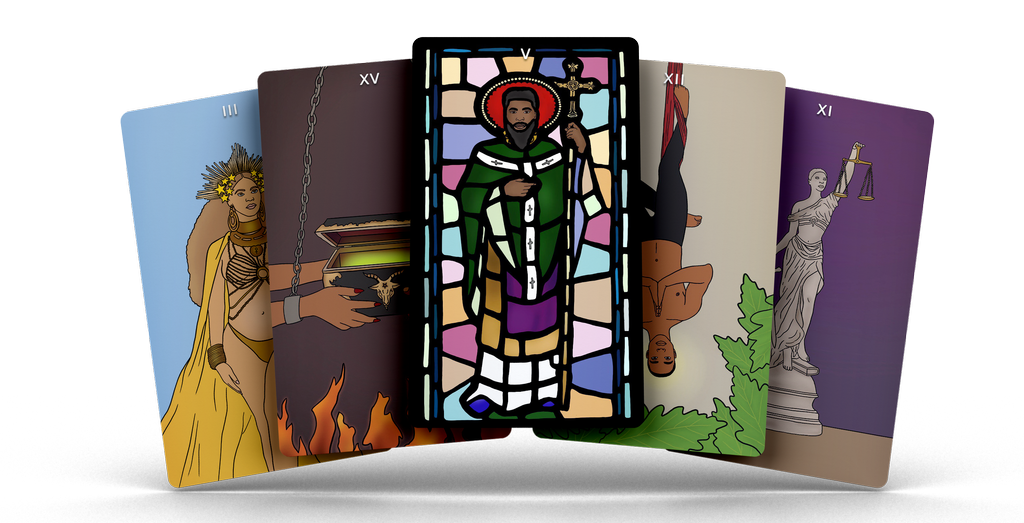
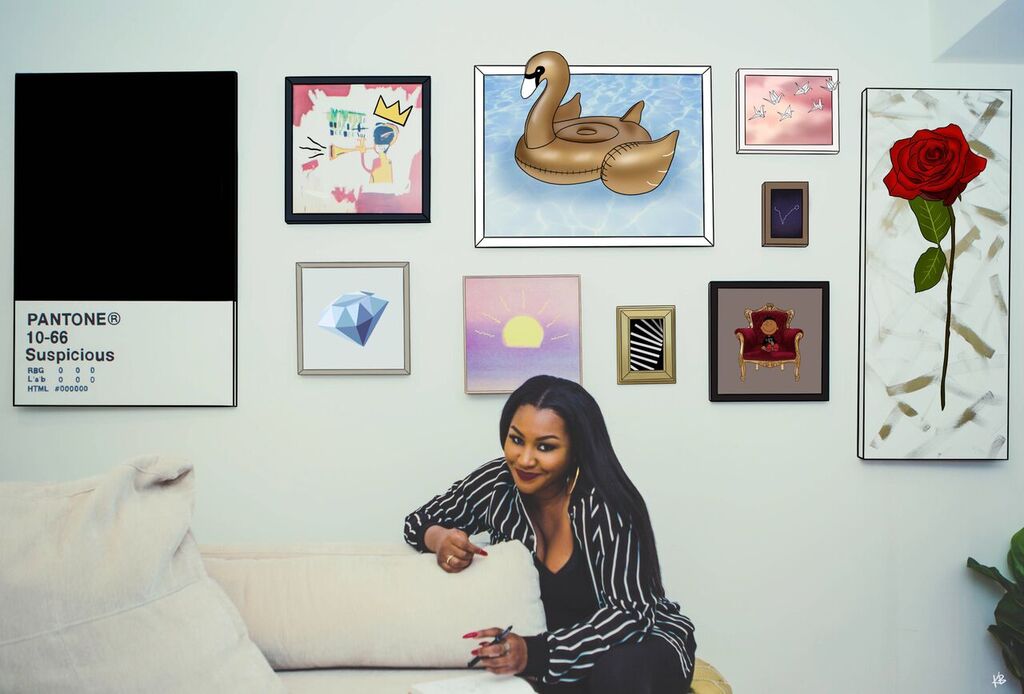
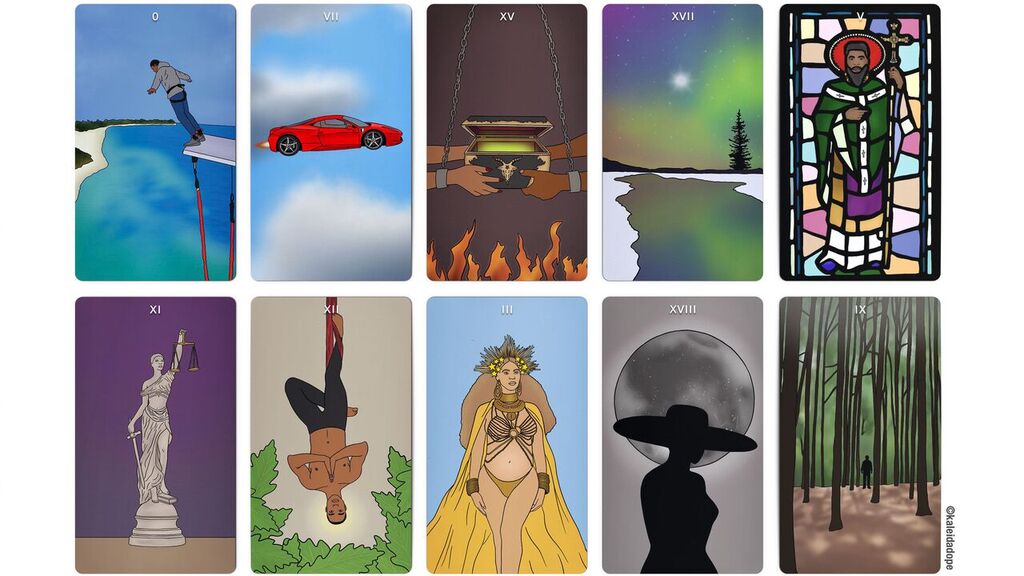
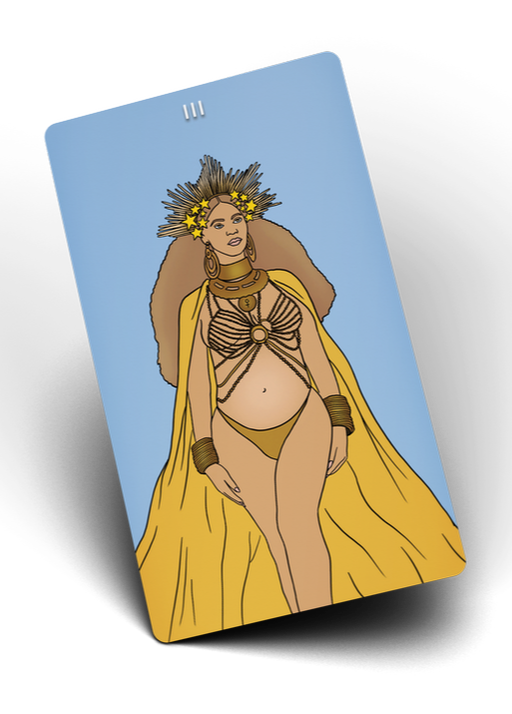
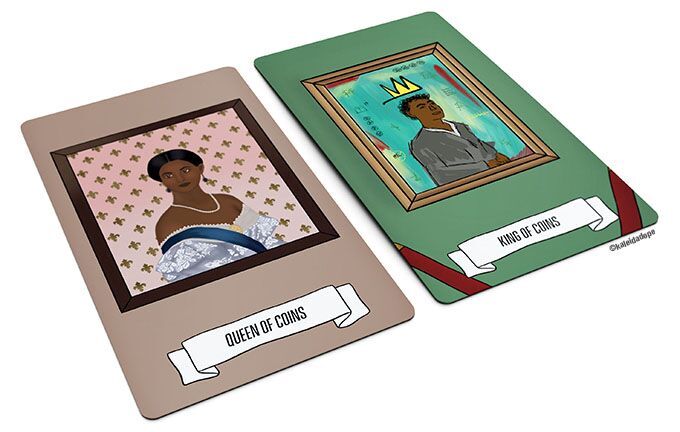
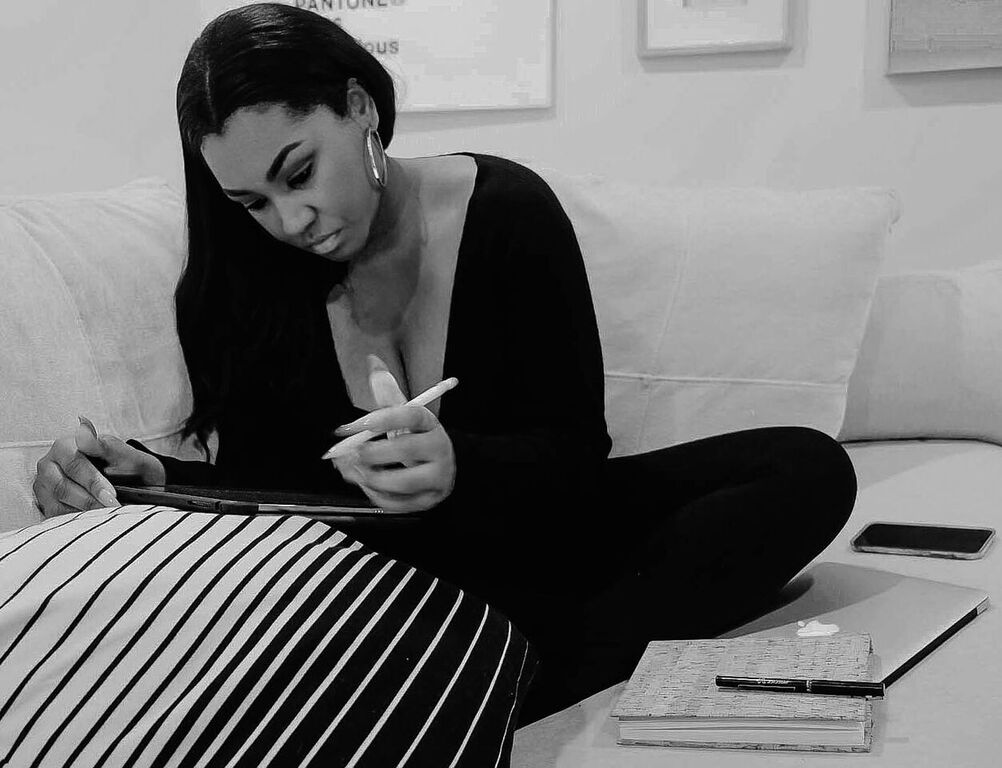
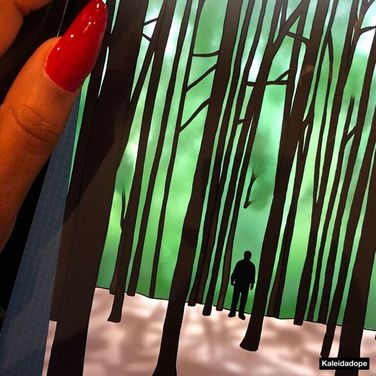
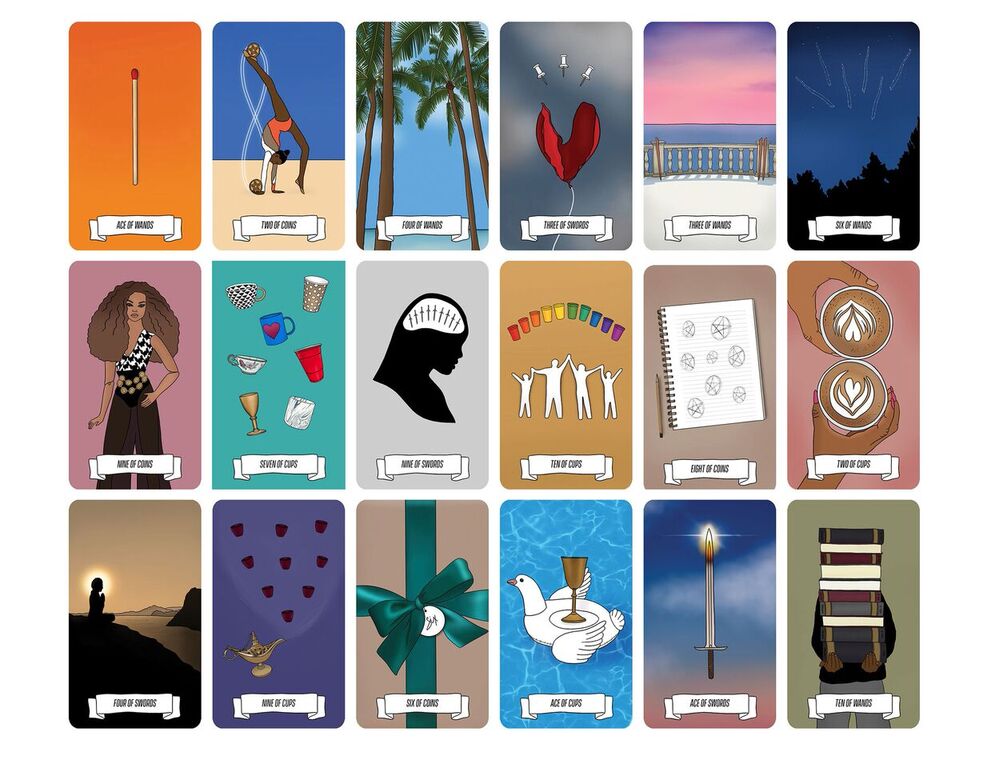
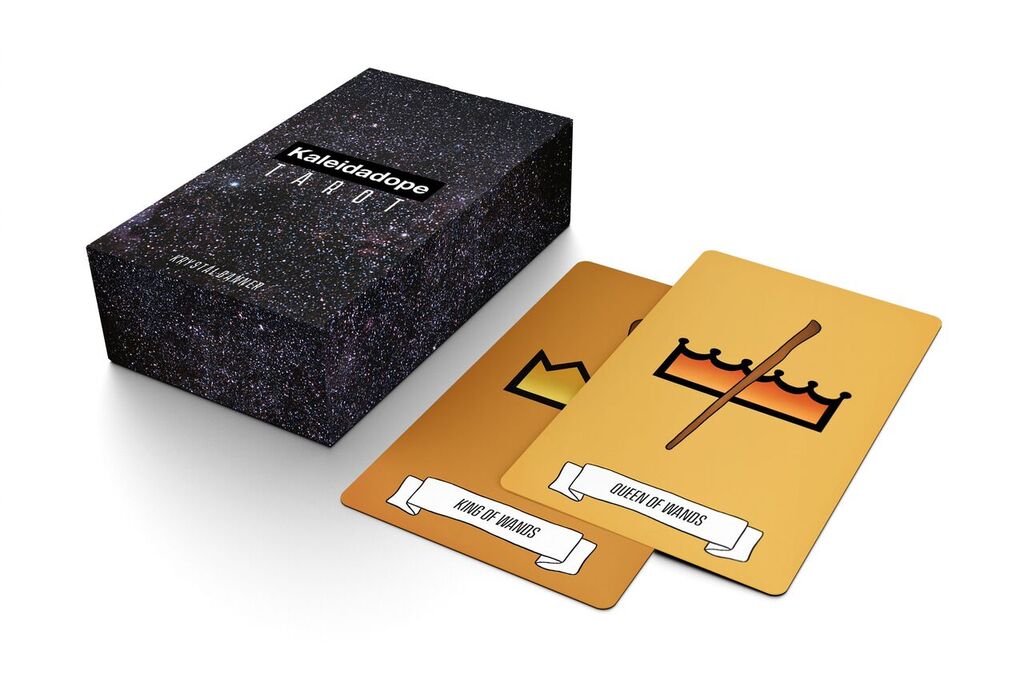

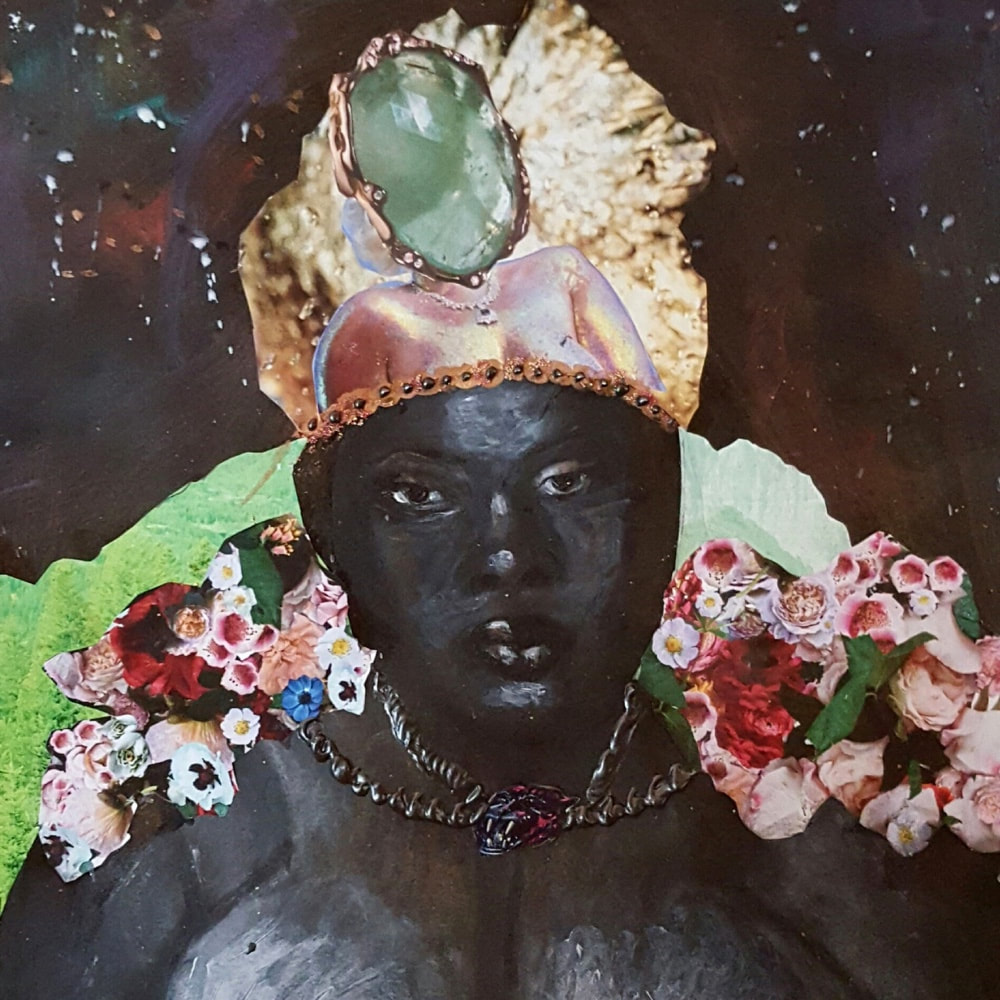
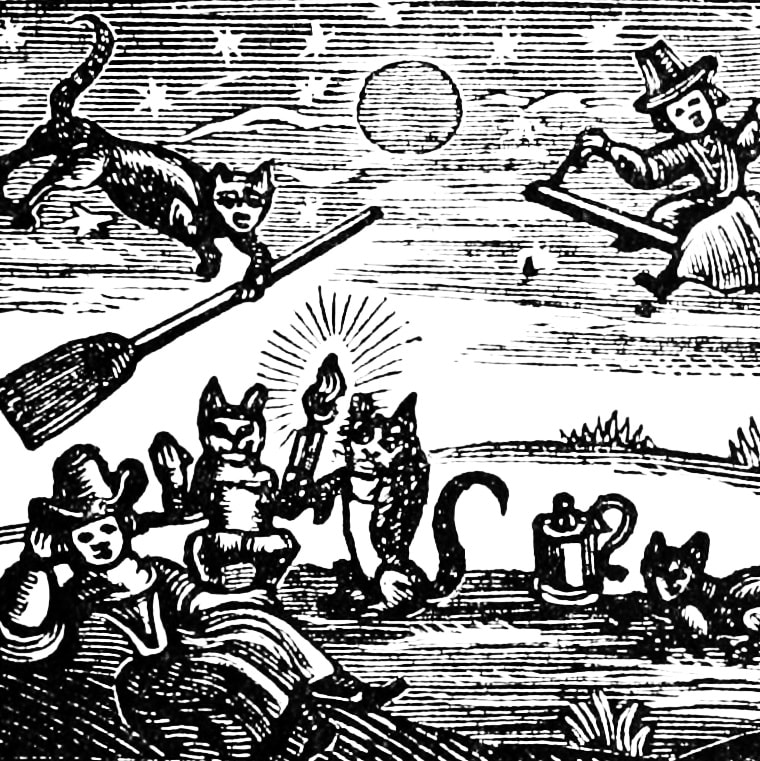
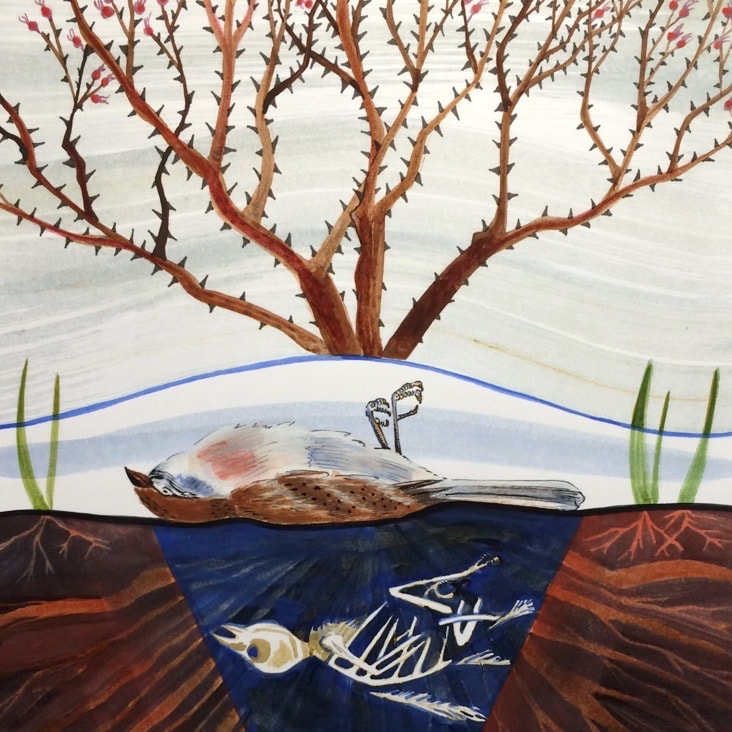
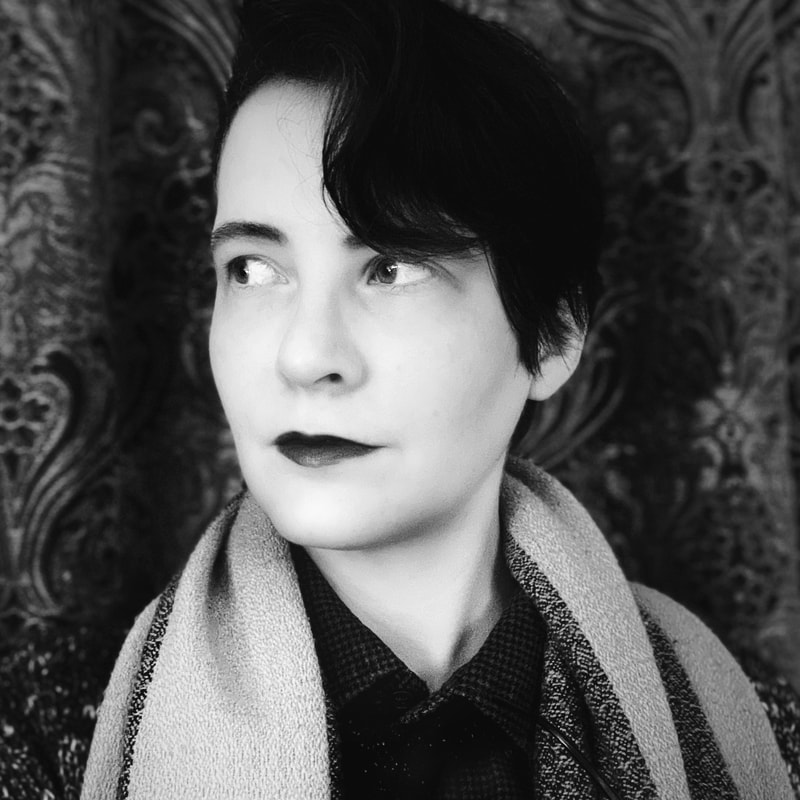
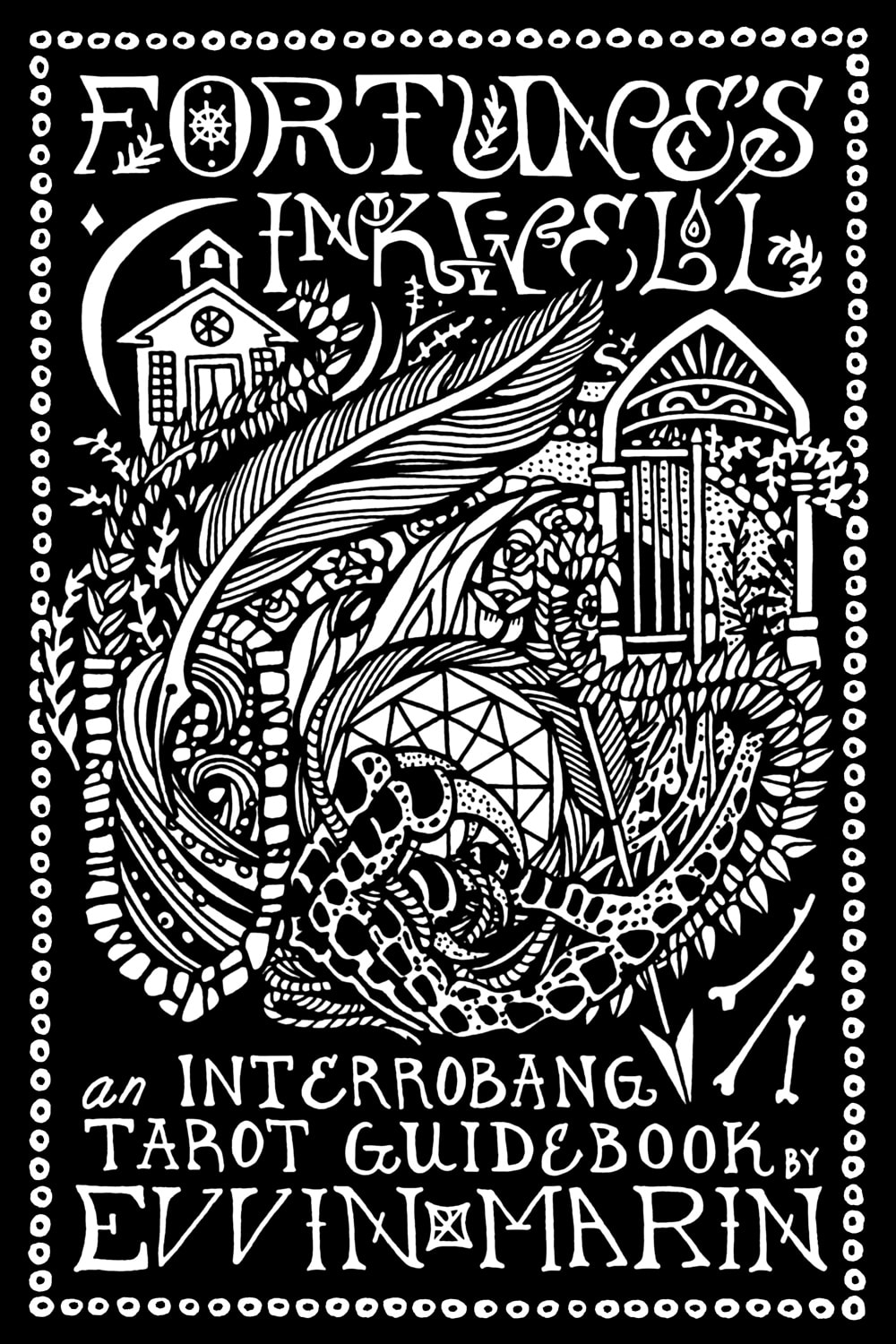
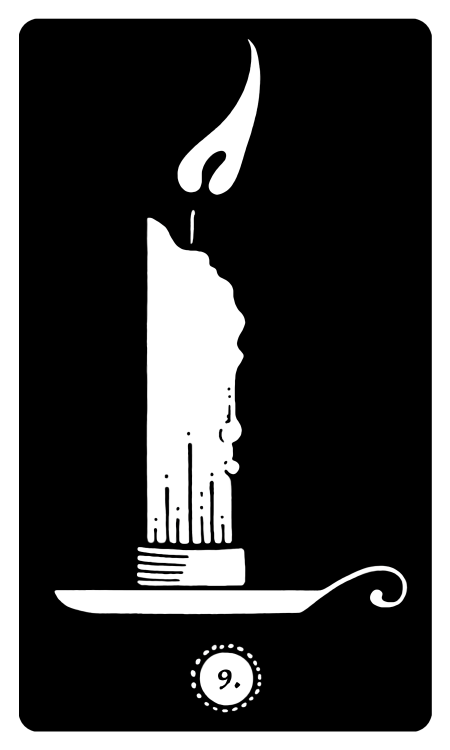
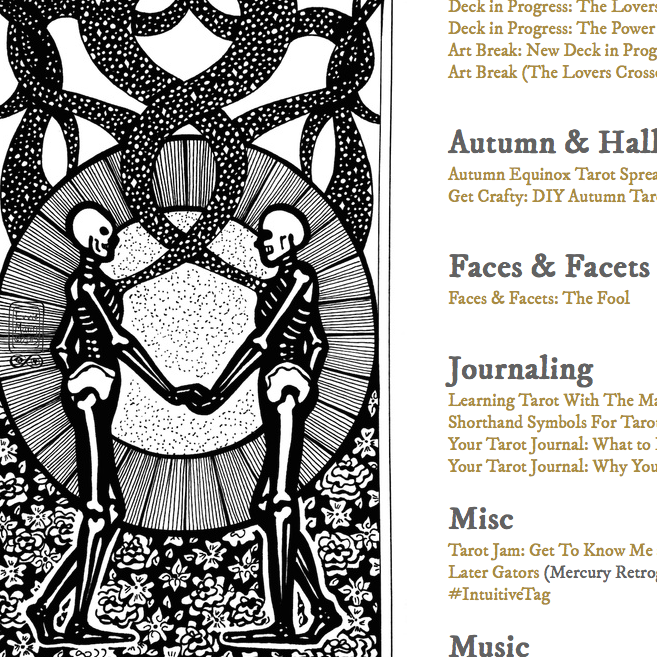
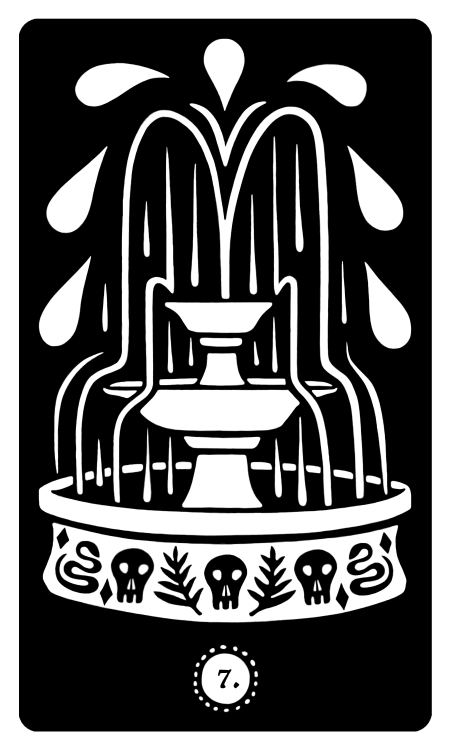
 RSS Feed
RSS Feed
